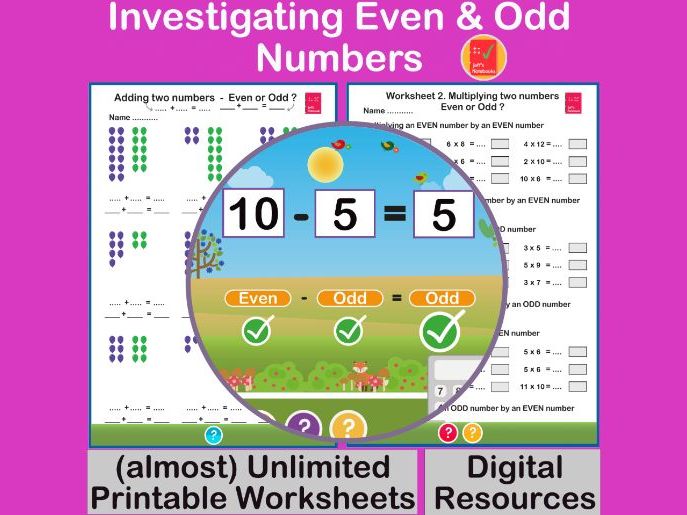
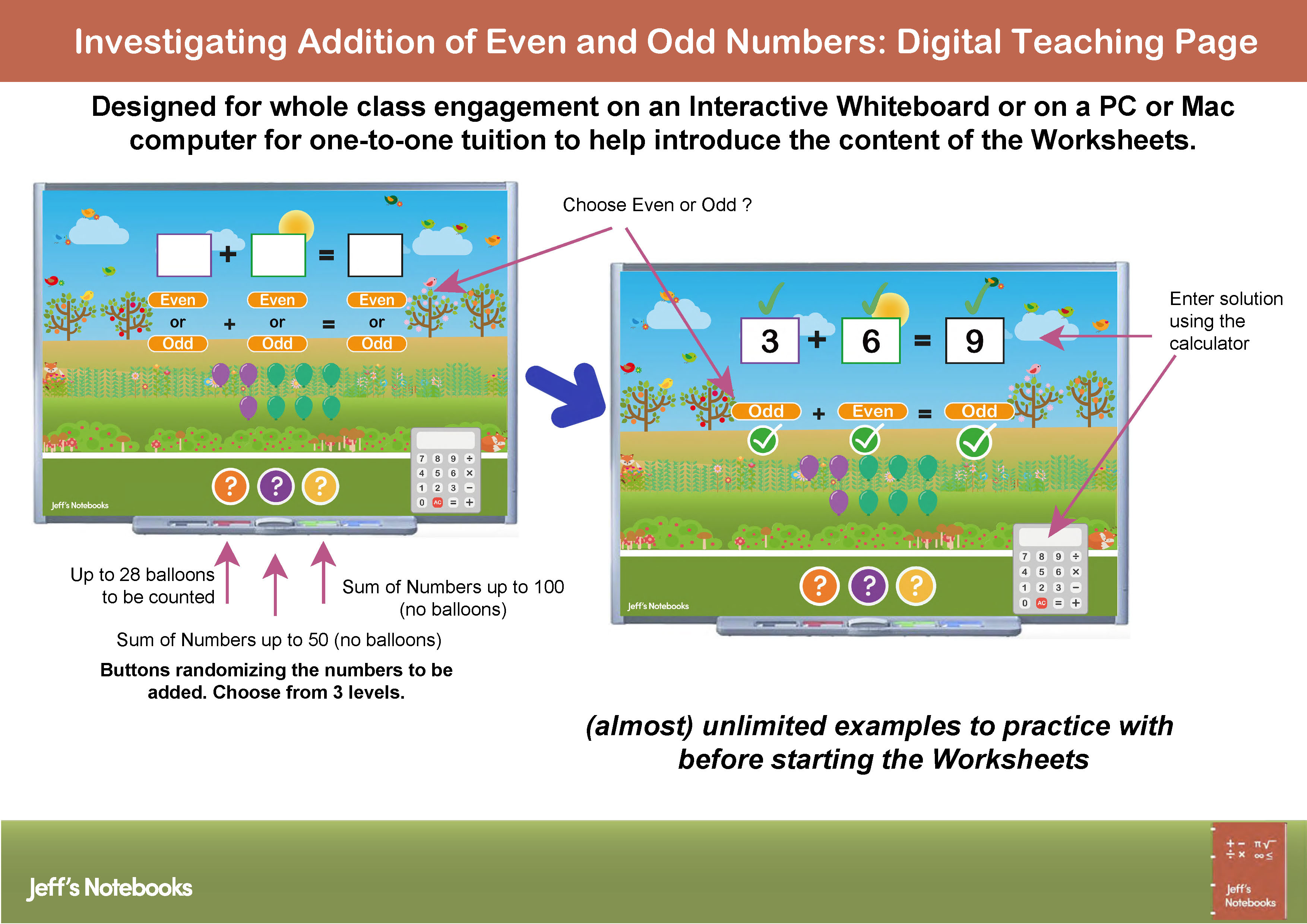
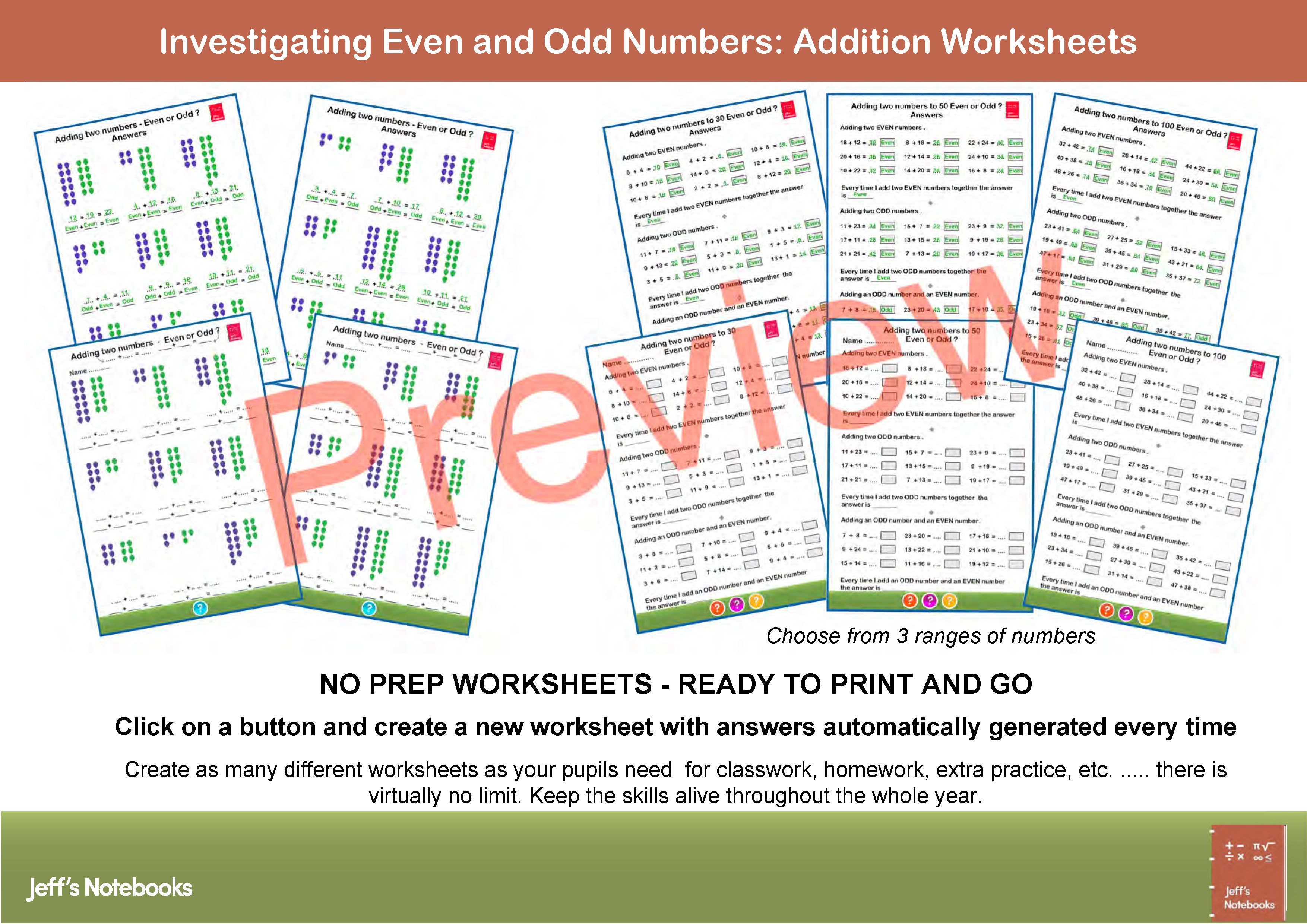
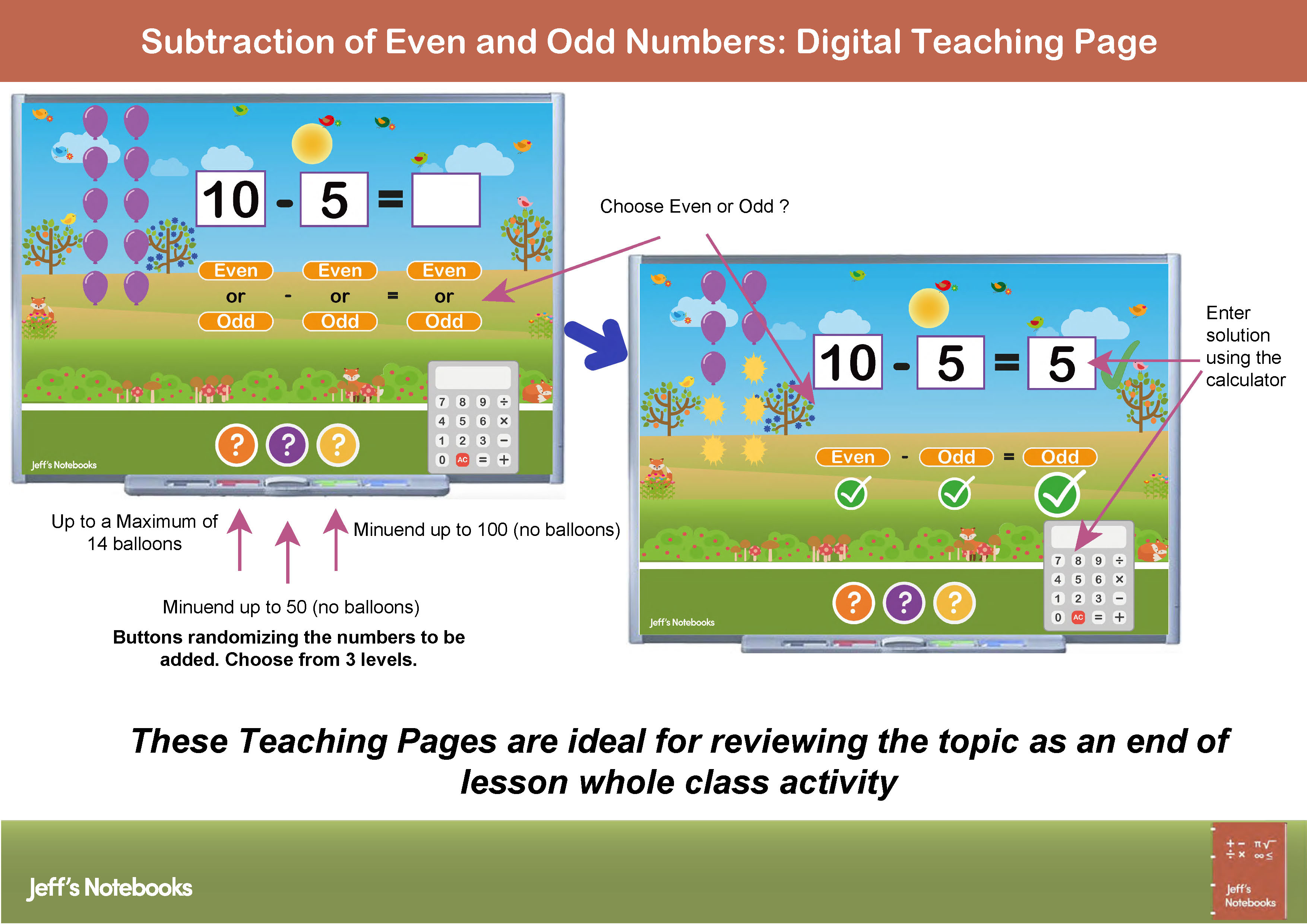
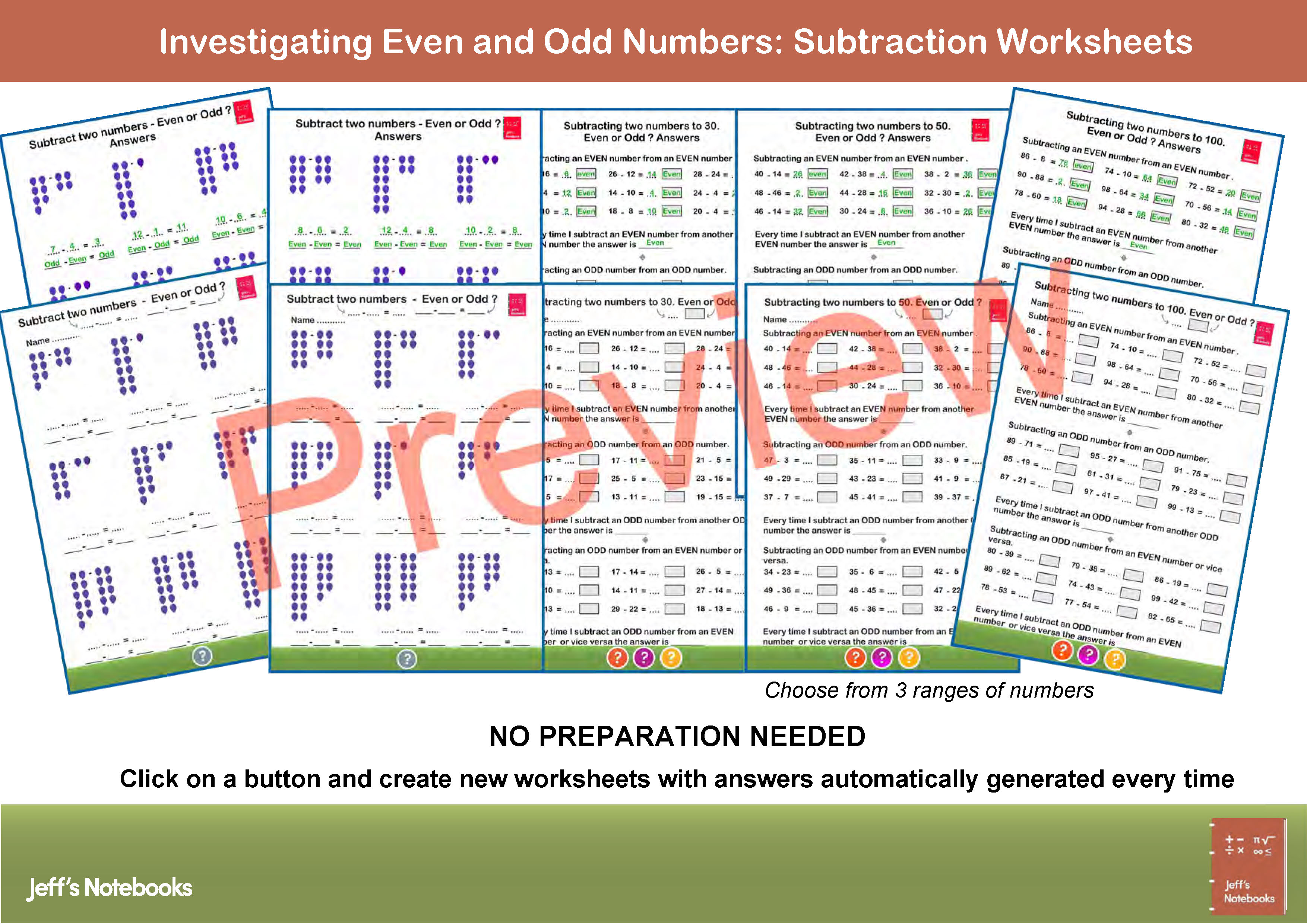
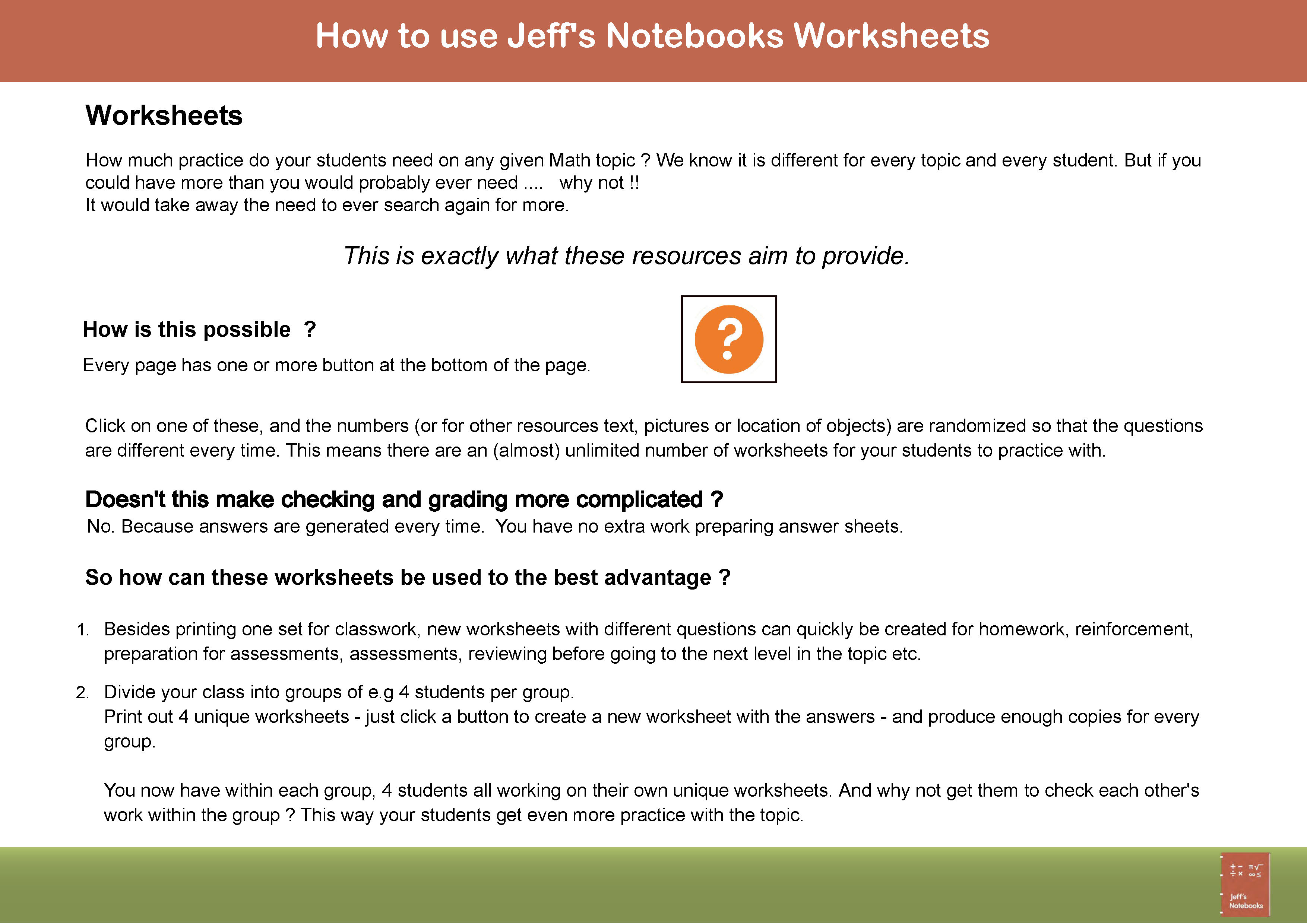
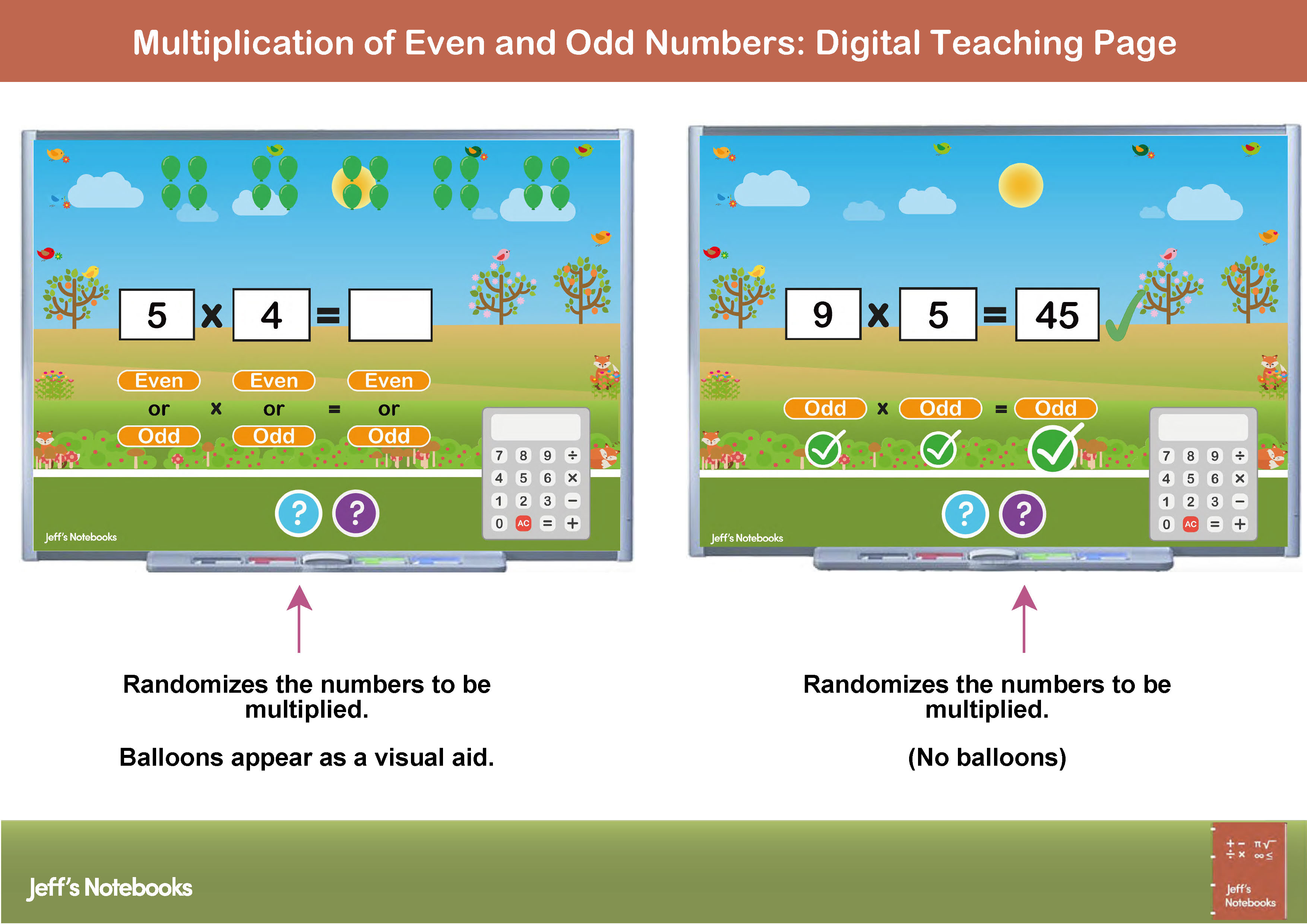
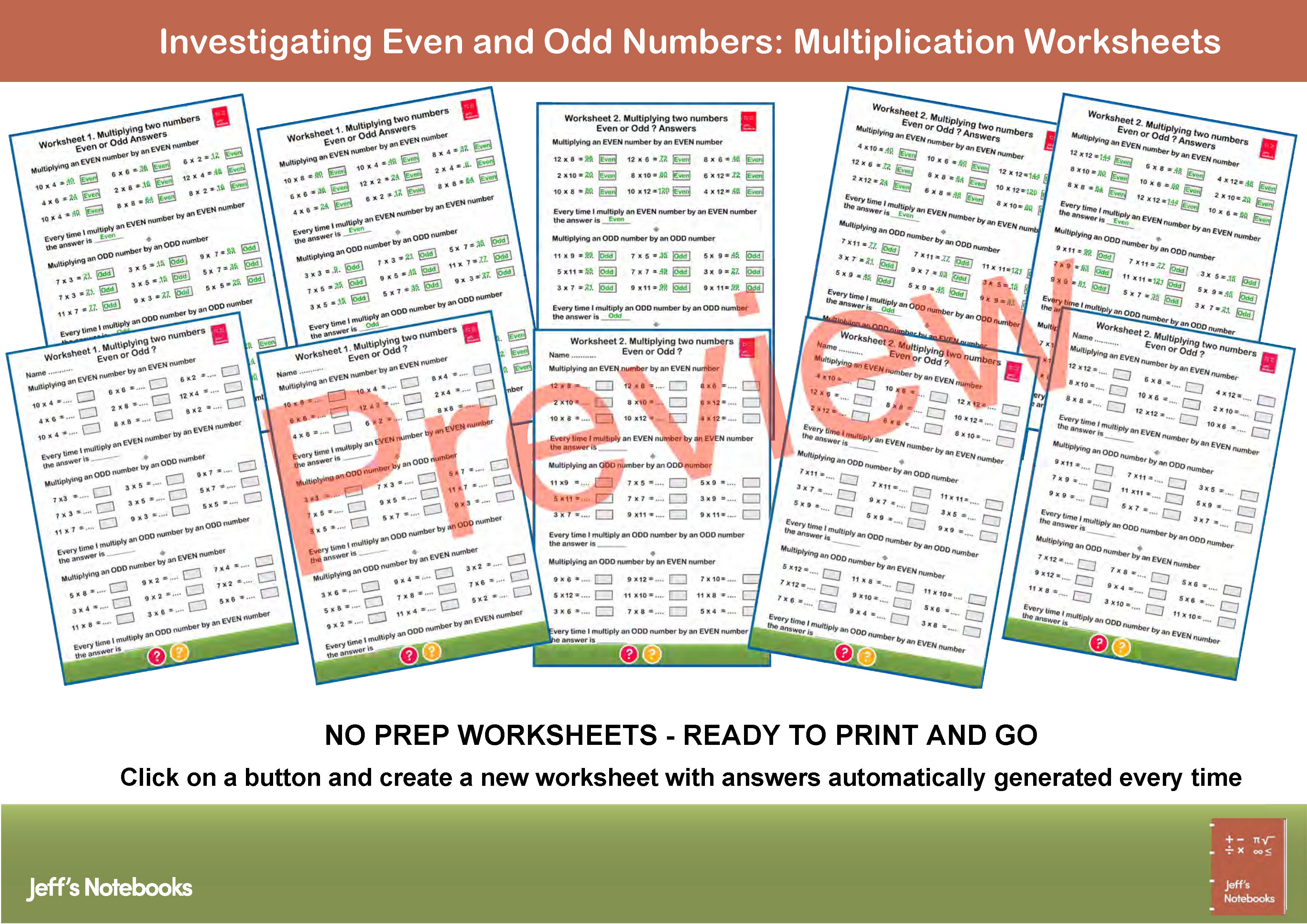
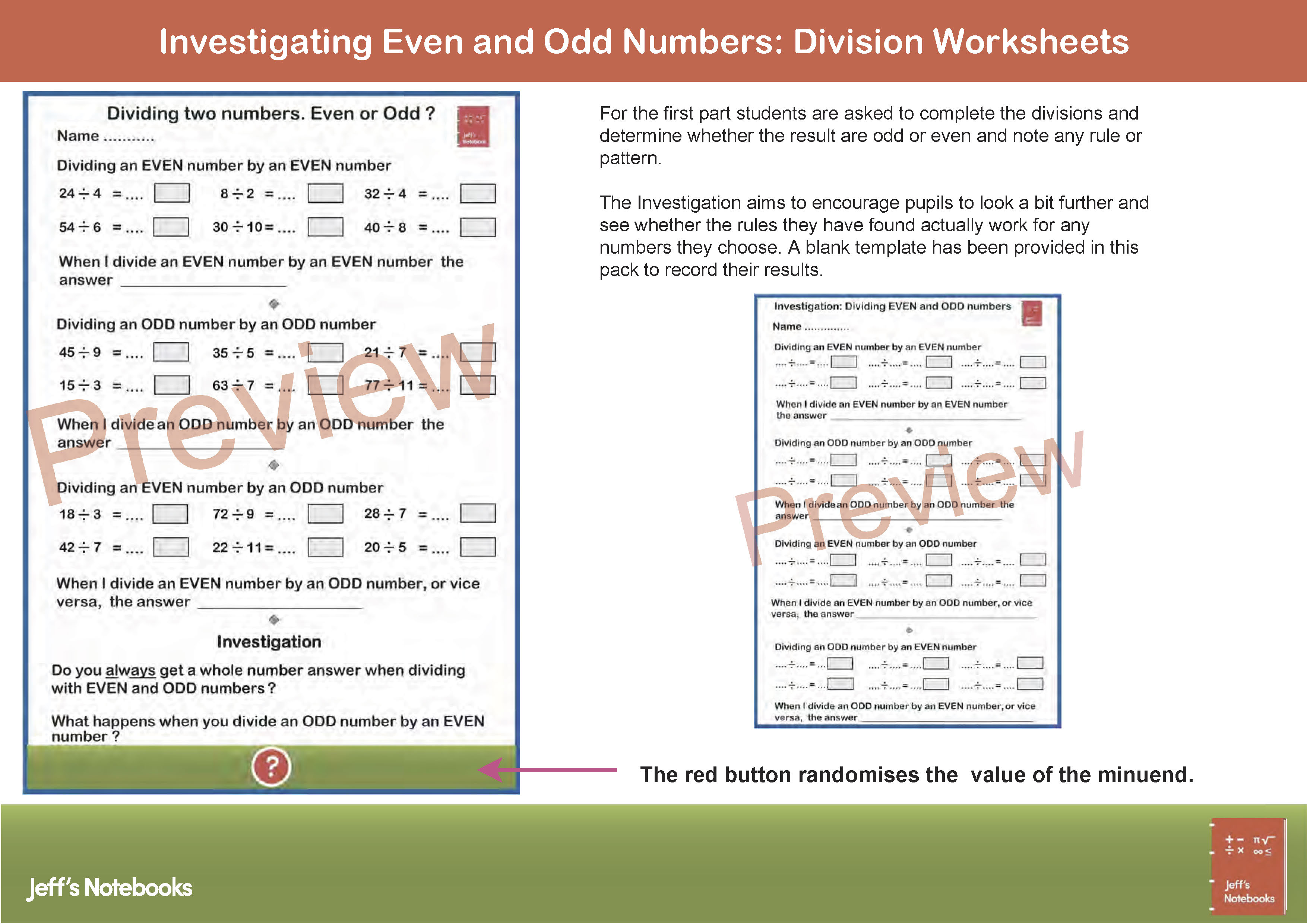
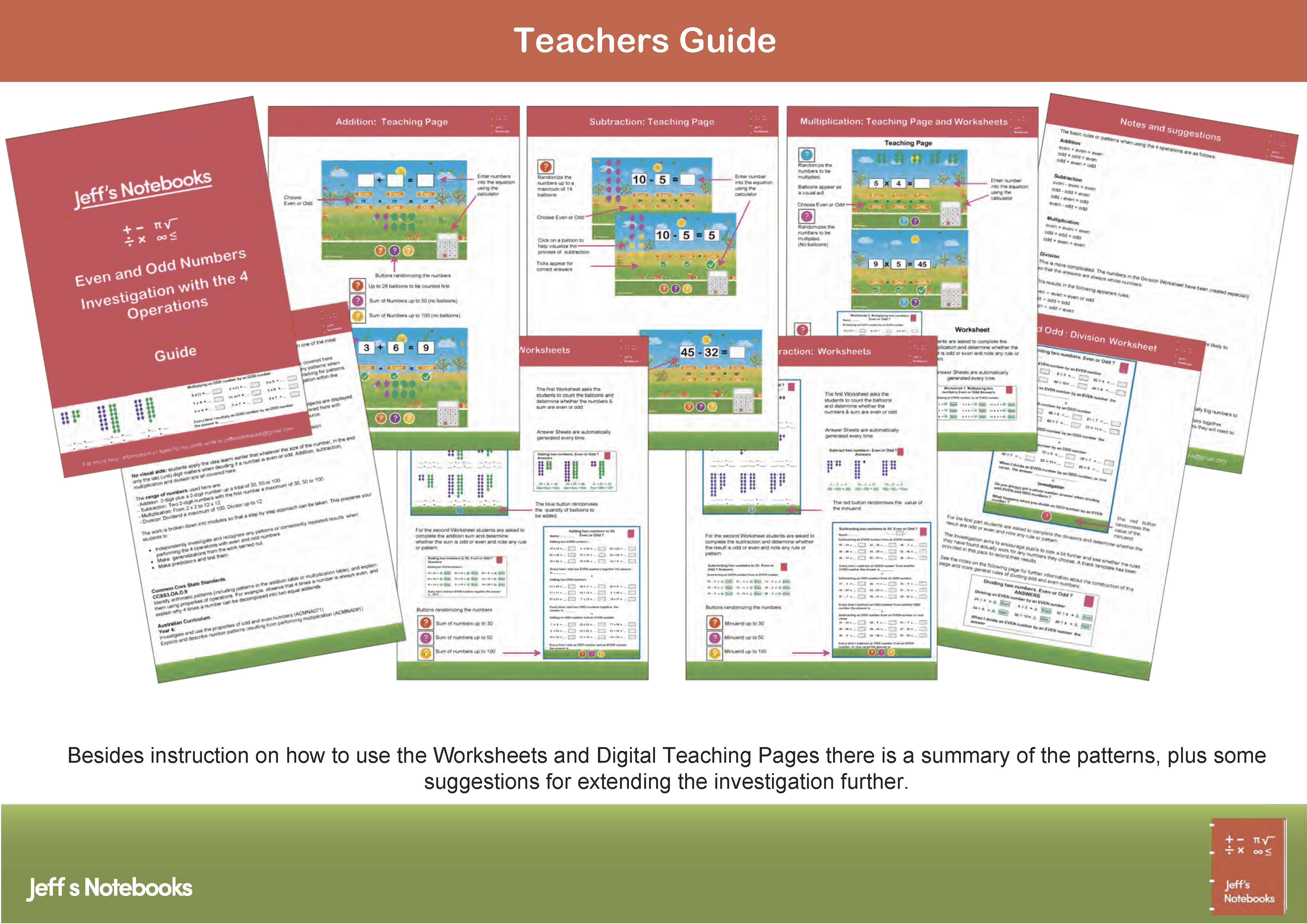

This resource guides students through an exploration of patterns in our number system using the most fundamental classification of numbers - even and odd with the 4 operations, adding, subtracting, multiplying and dividing
With Even & Odd Numbers - Recognition & Identification as a foundation, a natural extension would be to investigate whether there are any patterns when even and odd numbers are added, subtracted, multiplied or divided. So, as well as looking for patterns pupils are practicing and applying the 4 basic number operations in a math investigation
There are two basic approaches to this investigation:
With visual aids: Students can get visual clues when even and odd numbers of objects are displayed in an orderly fashion. Addition and Subtraction are covered here with worksheets and digital teaching resources. Multiplication has a digital teaching resource.
The range of numbers used are between 1 and 28 for addition, and 1 to 14 for division
For the multiplication the examples go from 2 x 2 to 6 x 7
Without visual aids: students apply the idea learnt earlier that whatever the size of the number, in the end only the last (unit) digit matters when deciding if a number is even or odd. Addition, subtraction, multiplication and division are all covered here.
The range of numbers used:
- Addition: 2-digit plus a 2-digit number up a total of 30, 50 or 100
- Subtraction: Two 2-digit numbers with the first number a maximum of 30, 50 or 100
- Multiplication: From 2 x 2 to 12 x 12
- Division: Dividend a maximum of 100, Divisor up to 12.
The work is organized into modules so that a step by step approach can be taken, and in fact the whole investigation including extension work suggested in the Guide could be spread throughout the whole year. Your students will learn to:
Independently investigate and recognise any patterns or consistently repeated results when performing the 4 operations with even and odd numbers.
Make generalizations from the work carried out.
Make predictions and test them.
How many worksheets are in each set ?
Almost unlimited. At the click of a button all numbers are randomised, so the questions change every time allowing you to create new worksheets for extra practice or revision throughout the year or even give groups of pupils in your class different sets of questions. See the Preview
Answers are on the second page of every worksheet, automatically generated when you create a new worksheet.
Something went wrong, please try again later.
This resource hasn't been reviewed yet
To ensure quality for our reviews, only customers who have purchased this resource can review it
to let us know if it violates our terms and conditions.
Our customer service team will review your report and will be in touch.